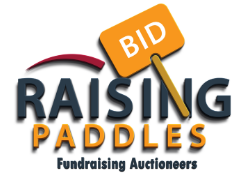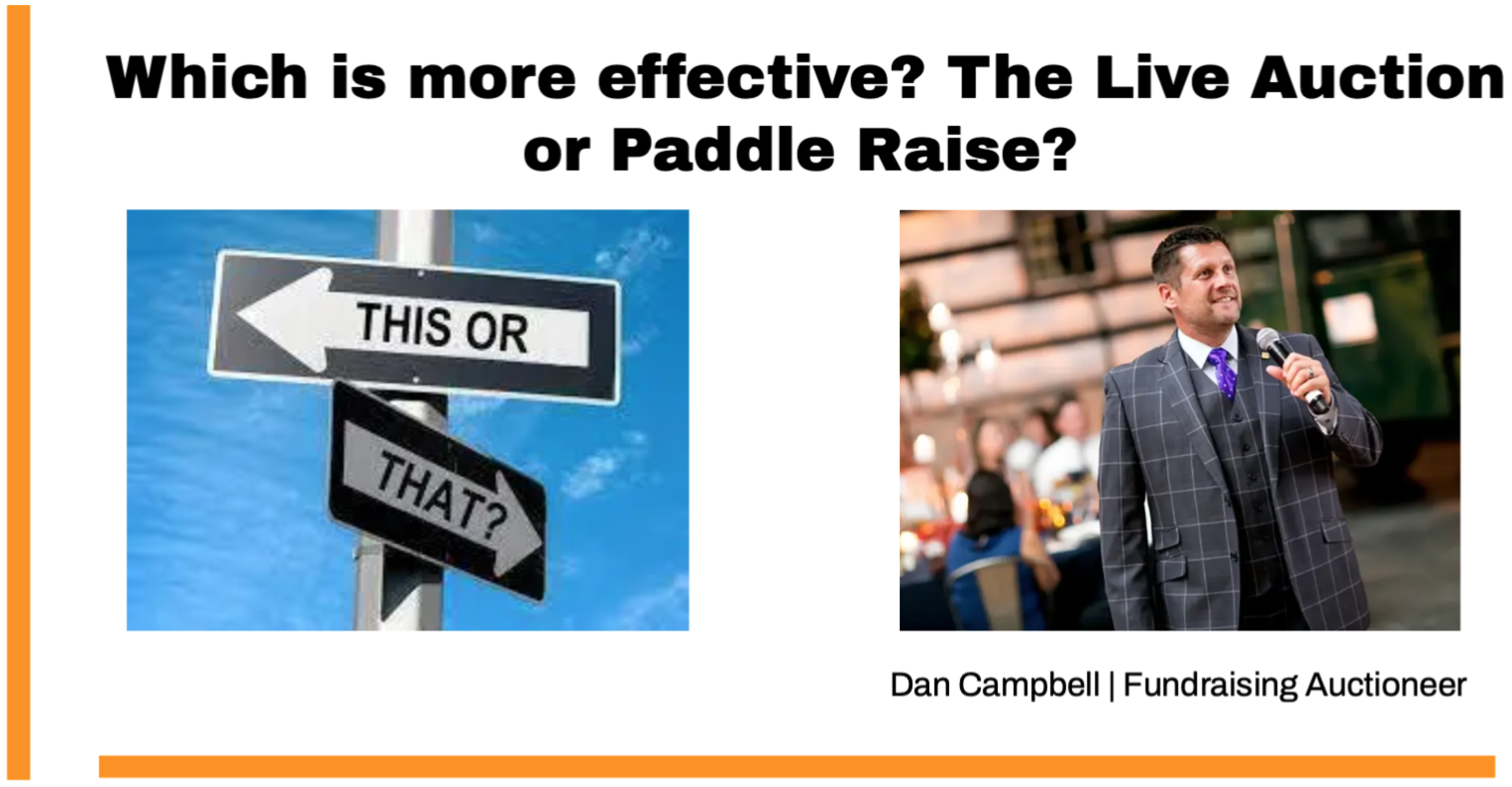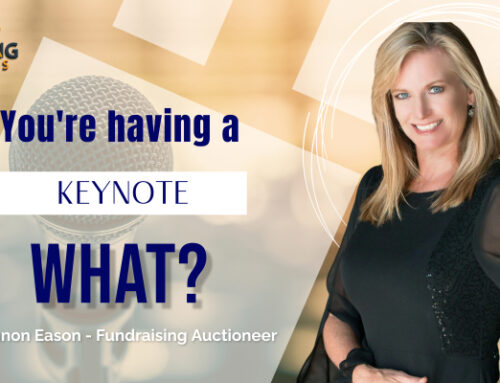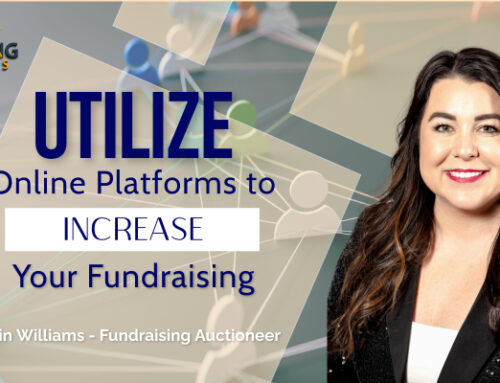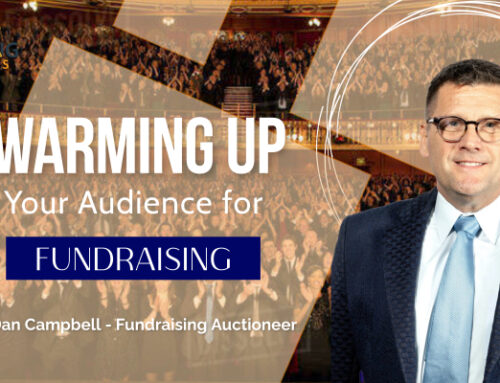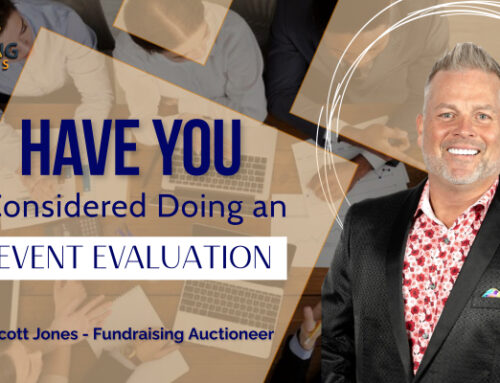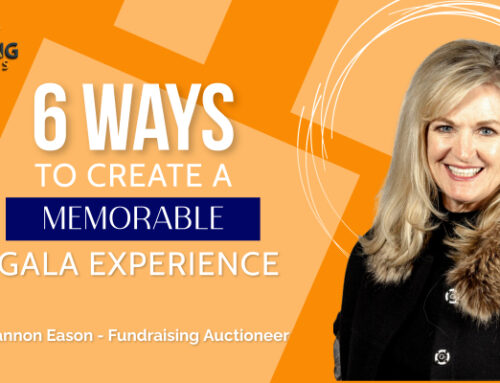The short answer is….BOTH! While most non-profit galas include both a live auction and a paddle raise, some will stick with one or the other. You will see one organization that is uncomfortable asking their donors who support them throughout the year to give again at their gala. Another organization will express concern that the live auction can detract from the generous and impactful giving that happens in the paddle raise. And if you have consignment items, there is a potential cost to the live auction, meaning that some of the money they bid and give does not go directly to the organization.
There is a certain validity to both of these concerns, but we would like to paint a different picture for you as you decide how to build your fundraising program for your event. For the live auction, there are only so many people who will win auction items, so the paddle raise typically has the farthest reach to your guests and donors….anyone and everyone can give during the paddle raise! Yet that outcome doesn’t always materialize. Also, people tend to spend more on a live auction item than they would donate in the paddle raise. Each person has their own individual giving budget and their own travel and experience budget. In most cases the travel and experience budget is greater. PLUS, their giving budget is typically divided into multiple causes that they support (school, church, and one or two other causes that are important to them), so if you happen to be one of their top 4-5 favorite causes, then you still will only get a portion of that giving, right?
People will easily spend $2,000-$5,000 or more on their next vacation, but will they donate that much during your paddle raise? Case in point, a recent event had the paddle raise first, and only 30 people gave during this portion. It was a dismal paddle raise from our perspective, yet this SAME audience proceeded to spend over $100,000 in the live auction portion of the program, with 20 different live auction winners participating. Ultimately, the night was a success, as raffles and silent auction did extremely well too. This particular audience was more interested in buying things vs. simply giving. Conversely, you may have an audience that is highly motivated to give from the heart, and really isn’t as interested in purchasing things at your event. In both cases, you can exceed your goals, but if you only offer one or the other, you could be missing out on the potential of your donors. In the example above, had we only had a paddle raise, it would have been a disappointing night, to say the least!
There are certain events and audiences where it makes sense to only do a paddle raise, or only do a live auction. And we have also found from year to year your audience giving mix can change. One year, your audience is extremely generous in the paddle raise, and not very invested in your live auction. The next year, your audience really steps into the live auction, and paddle raise is less than the year before. By offering both during your fundraising program, you are mitigating this risk even if your audience’s needs change. Think back to Covid….lots of people pivoted from bidding on vacations to simply giving from the heart. Yet, when the pandemic was over, those same people wanted to travel again, and they became very active in the bidding for live auction items again.
Getting to know your audience is part of the equation. If you have only done a paddle raise before, you might want to consider adding a couple of live auction items to your program to see how your audience responds. Each live auction item will add approximately 3 minutes to your program. For example, adding 2-3 live auction items is a 6-9 minute investment into seeing what the potential of your audience is. Conversely, a paddle raise takes approximately 8-10 minutes, again a worthy investment of time to see what your audience’s potential is.
In summary, you should be utilizing multiple fundraising elements to give each person who has a capacity to give the most effective way they personally can support you, which can change from year to year. Like a baseball player having 3-4 different opportunities at the plate, and you are giving your audience multiple chances to hit a home run for you!
